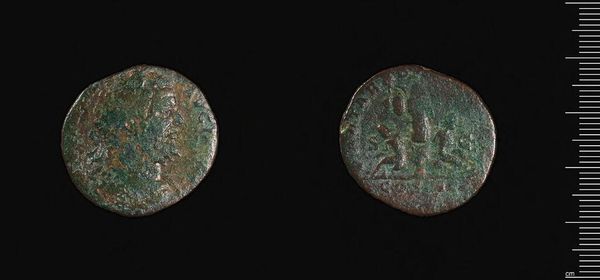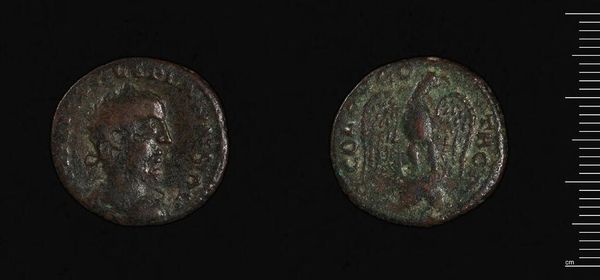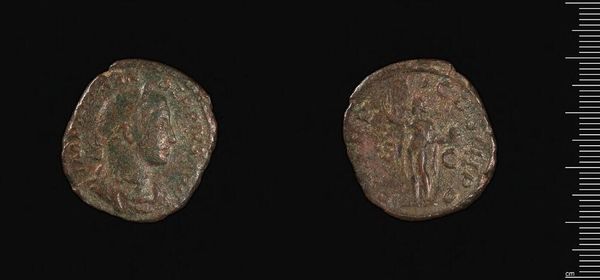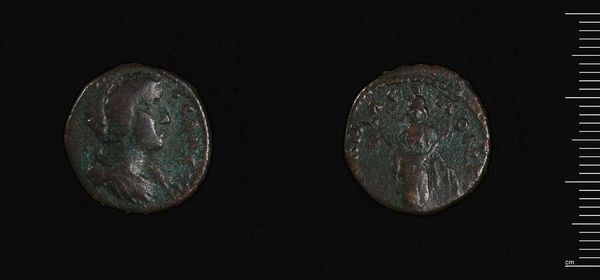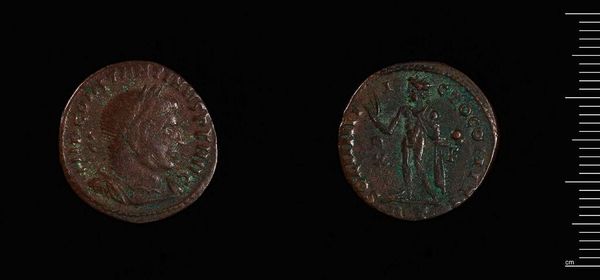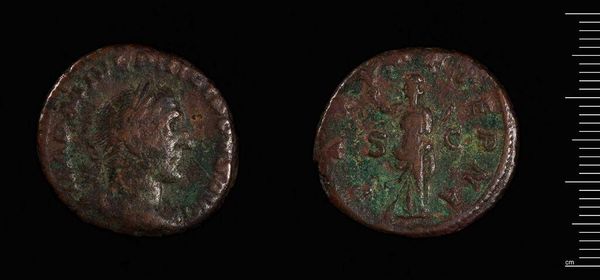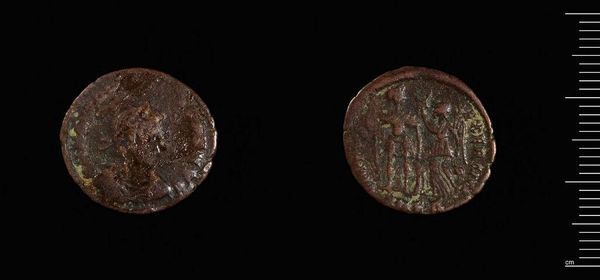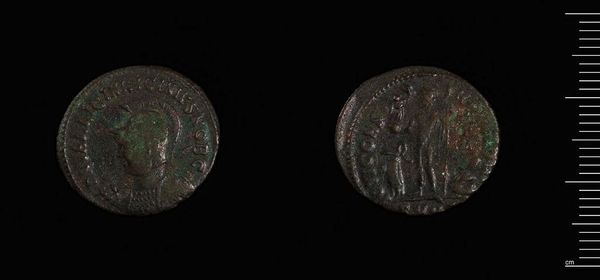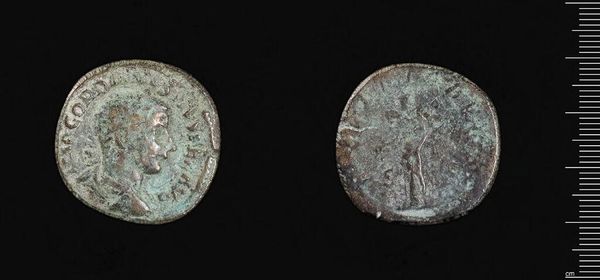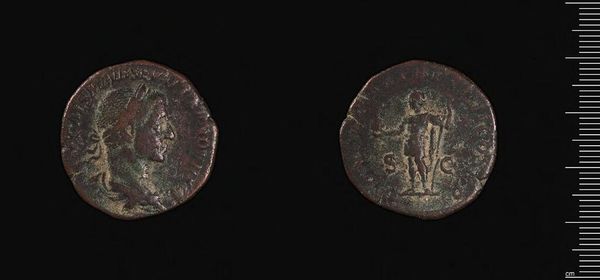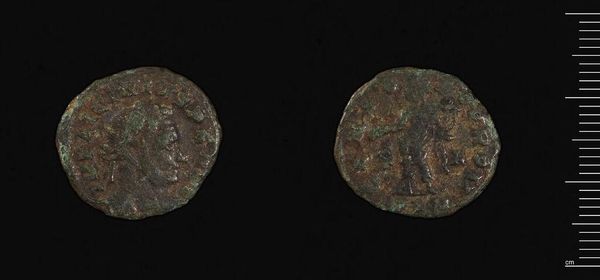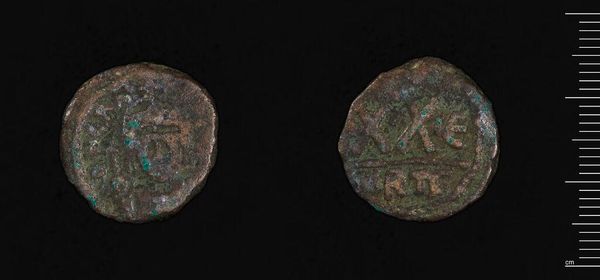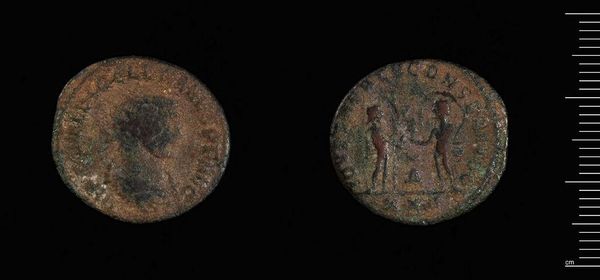
Dimensions: 18.97 g
Copyright: CC0 1.0
Curator: Here we have a sestertius, a bronze coin attributed to Septimius Severus, currently residing at the Harvard Art Museums. Editor: It's remarkably worn, yet the visible textures and faded details evoke a powerful sense of antiquity. Curator: Indeed. Though time has softened its forms, we can still discern Severus' profile on one side. This image, circulated widely, was intended to project authority and imperial identity. Editor: The opposite side seems to depict a standing figure, possibly a representation of Libertas, the Roman goddess of liberty. Its positioning and integration into the coin's circular format is quite compelling. Curator: Precisely. Coins like these were not merely currency; they were potent tools for disseminating imperial ideology. The goddess Libertas speaks to Roman ideals of freedom, which the emperor sought to associate with his rule. Editor: Seeing it now, I am drawn to its physicality. This object, small yet imbued with symbolic weight, served as a tactile link between the emperor and his subjects. Curator: It's fascinating how this little object was both a symbol of power and an everyday item. Editor: I hadn't considered it that way. The interplay of power and quotidian life is embedded into its design.
Comments
No comments
Be the first to comment and join the conversation on the ultimate creative platform.
